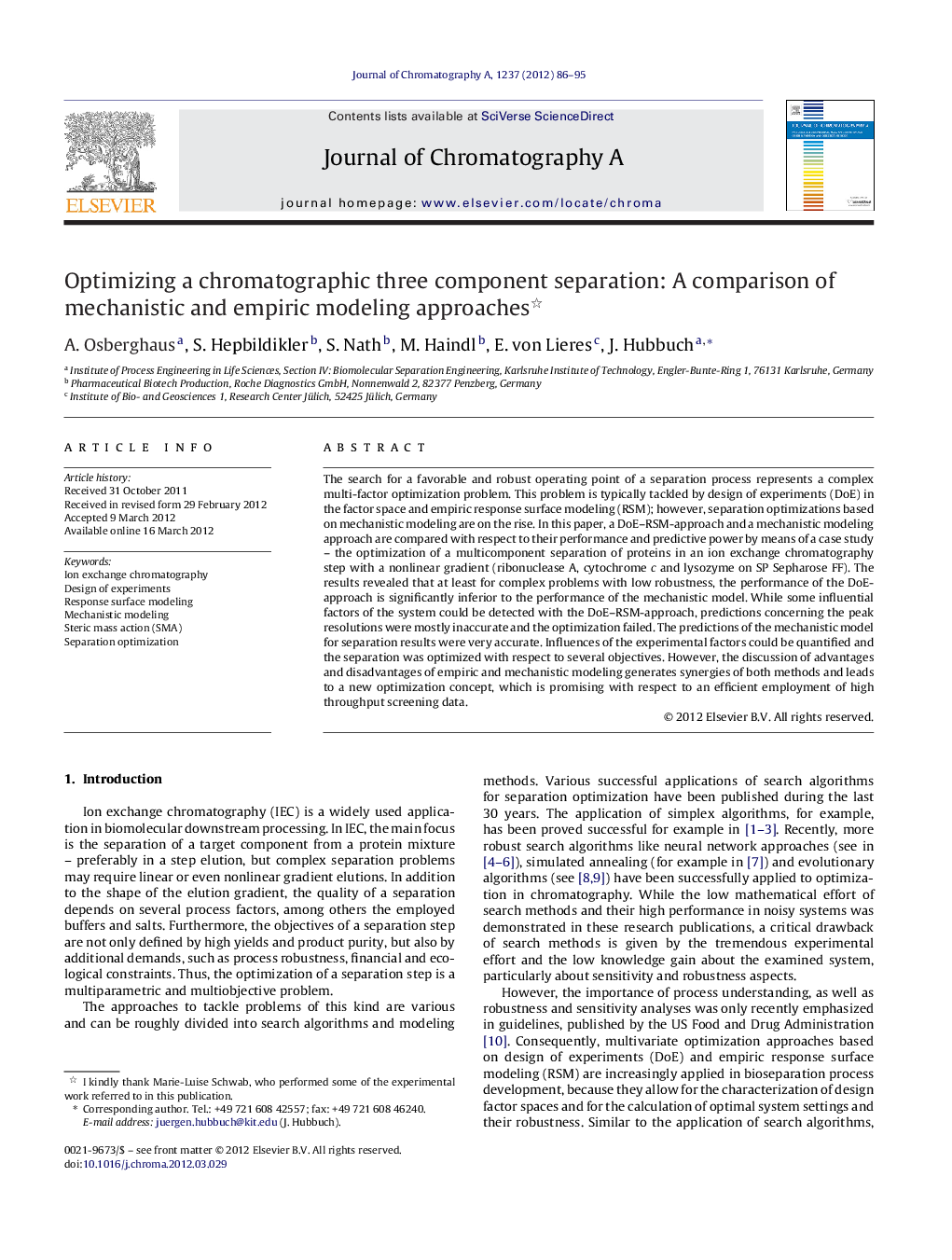| کد مقاله | کد نشریه | سال انتشار | مقاله انگلیسی | نسخه تمام متن |
|---|---|---|---|---|
| 1201035 | 1493688 | 2012 | 10 صفحه PDF | دانلود رایگان |

The search for a favorable and robust operating point of a separation process represents a complex multi-factor optimization problem. This problem is typically tackled by design of experiments (DoE) in the factor space and empiric response surface modeling (RSM); however, separation optimizations based on mechanistic modeling are on the rise. In this paper, a DoE–RSM-approach and a mechanistic modeling approach are compared with respect to their performance and predictive power by means of a case study – the optimization of a multicomponent separation of proteins in an ion exchange chromatography step with a nonlinear gradient (ribonuclease A, cytochrome c and lysozyme on SP Sepharose FF). The results revealed that at least for complex problems with low robustness, the performance of the DoE-approach is significantly inferior to the performance of the mechanistic model. While some influential factors of the system could be detected with the DoE–RSM-approach, predictions concerning the peak resolutions were mostly inaccurate and the optimization failed. The predictions of the mechanistic model for separation results were very accurate. Influences of the experimental factors could be quantified and the separation was optimized with respect to several objectives. However, the discussion of advantages and disadvantages of empiric and mechanistic modeling generates synergies of both methods and leads to a new optimization concept, which is promising with respect to an efficient employment of high throughput screening data.
► Empiric and mechanistic modeling for chromatography optimization are compared.
► We determine and discuss the parameters for both modeling approaches.
► A thorough evaluation of advantages and disadvantages of both methods is given.
► Empiric modeling failed to find the optimum, predictions were qualitatively correct.
► Mechanistic modeling allowed for precise predictions within and beyond design space.
Journal: Journal of Chromatography A - Volume 1237, 11 May 2012, Pages 86–95